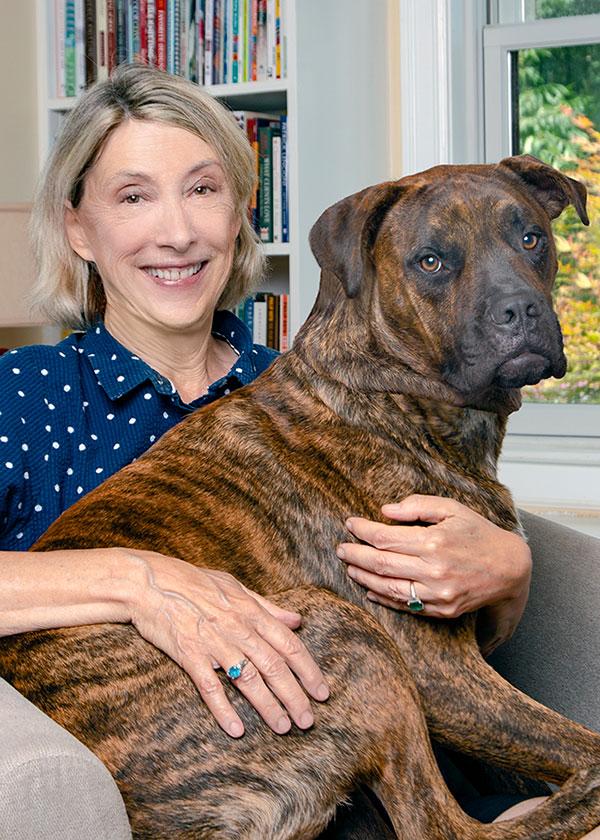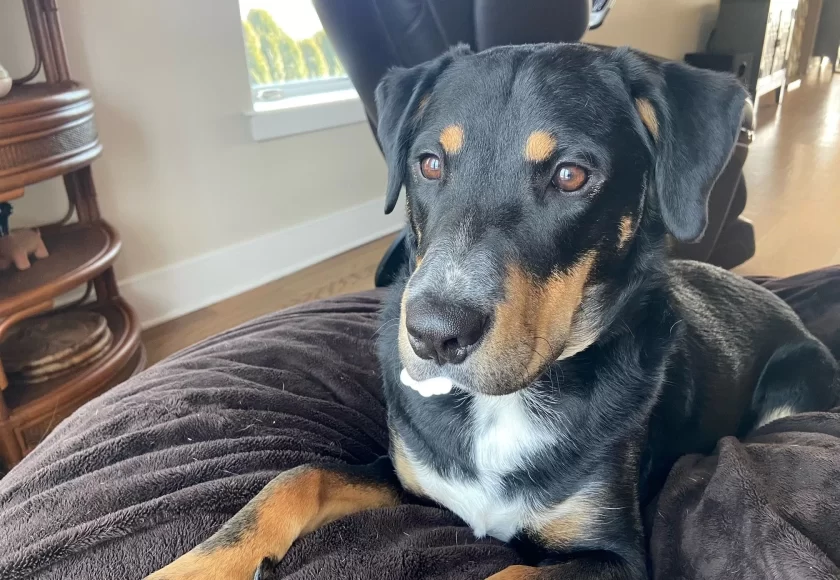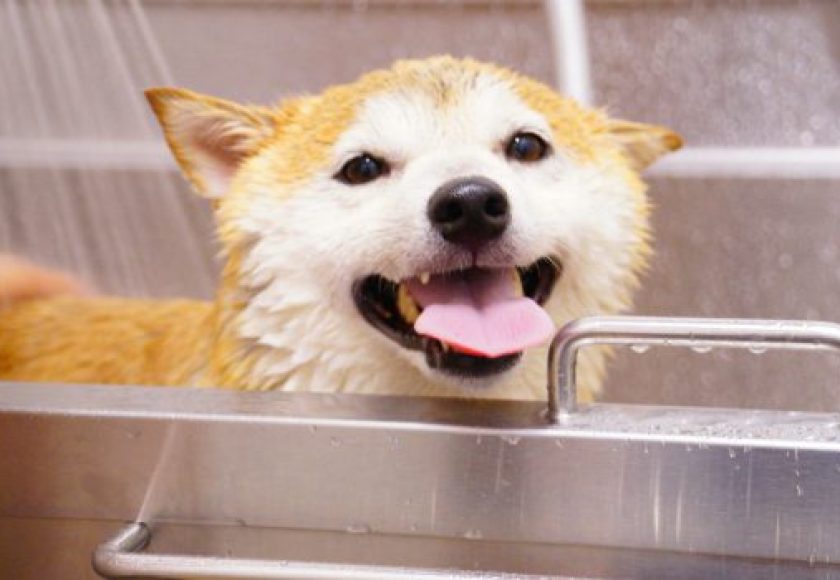Every service dog starts as a curious, distracted puppy. Leaves blowing down the sidewalk, strangers offering a friendly pat, and other dogs nearby can all seem more important than the person on the other end of the leash. But for a future service dog, learning to ignore distractions isn’t optional—it’s essential.
If you’re raising a service puppy, one of the most important skills you’ll help them develop is focus. In this guide, we’ll walk through exactly how to train a distracted dog—step-by-step—with tips tailored specifically for service dogs in training.
Why Focus Is the Foundation of Service Dog Training
While many pet owners are satisfied when their dog “mostly listens,” service dogs must be consistent and reliable in every environment. That means learning to stay calm and attentive even when the world is buzzing with distractions.
Focus training teaches your pup that their job is to stay connected to you, no matter what’s going on around them. And just like any other skill, focus takes daily practice—starting with controlled environments and gradually building toward the unpredictable real world.
What Counts as a Distraction for Service Dogs?
Distractions are anything that tempts your pup to break focus. These can include:
- Strangers who want to pet or talk to your dog
- Other dogs on or off leash
- Smells on the ground or in the air, such as food in a restaurant
- Loud noises, cars, scooters, shopping carts
- Busy environments like sidewalks, parks, or stores
The goal of training a distracted dog isn’t to shield them from these things, but to teach them how to notice, process, and calmly move on.
Step-by-Step: Teaching Your Dog to Tune Out Distractions
Step 1: Start at a Distance
Begin by exposing your puppy to a low-level distraction at a distance where they can still listen to you. Let them notice the distraction, and the moment they look back at you, praise them: “Good girl!” Deliver a food reward as you walk calmly away.
If your pup gets too fixated—staring, pulling, or ignoring cues—you’re too close. Increase distance until you can successfully redirect their attention.
Step 2: Reward the “Check-In”
Over time, your puppy will begin to check in with you on their own when they notice something new. This moment is gold. Reward it generously! With repetition, the check-in becomes your dog’s default response to distractions.
Step 3: Permission-Based Exploration
Once your puppy is focused and calm, you can allow them to explore the distraction—but only when they’ve “asked” by offering a behavior like a sit. Then, smile and say, “Okay!” to release them to sniff or explore briefly. Afterward, call them back to you and reward them at your left side.
This teaches your dog that focus unlocks opportunity—and that you are the gateway to everything good.
Leash Manners Matter, Even Around Distractions
Service dogs are expected to walk with impeccable leash manners. That starts now.
- On working walks (with vest on), expect a close heel on a loose leash at your left side.
- Sniffing, pulling, or wandering are not allowed while working.
- On casual walks (vest off), you may use a longer leash and allow more freedom—but pulling is never permitted.
- Dogs in training must never greet other dogs while on leash, even during casual walks.
Every walk is a training opportunity. Short, successful walks with consistent expectations will build the skills your pup needs for a lifetime of public access.
Managing the Most Tempting Distractions
People
Friendly strangers often call to puppies, whistle, or try to pet them. Your job is to protect your pup’s focus. If your puppy is calm and attentive, you may allow a greeting with permission (“Okay!”). If not, it’s perfectly okay to say, “Thank you, but we’re in training right now.”
Reward your dog during this ‘non-interaction’ and as you walk away.
Other Dogs
Other dogs are especially distracting for social puppies—but service dogs must learn to ignore them completely. Maintain enough distance for your pup to succeed. Reward disengagement, and never allow on-leash greetings. Over time, your puppy will begin to view other dogs as background noise, not potential playmates.
Consistency Builds Focus, Not Corrections
Distraction training is a long game. Some days your pup will regress. That’s normal.
Focus and impulse control come from:
- Daily repetition in a variety of settings
- Staying calm and clear when your pup struggles
- Ending sessions on a win—even if it’s small
- Rewarding behaviors you want to see again
Resist the urge to correct or scold your pup when they’re distracted. Instead, set them up for success by controlling the environment, increasing distance, and rewarding calm engagement.
What to Do When Your Pup “Locks In”
Sometimes a puppy will become too overstimulated to listen. They may freeze, bark, pull, or stare intensely. If this happens:
- Do not yank the leash.
- Calmly create more distance from the distraction.
- Wait for a check-in or a softening of body language.
- Reward even the tiniest effort to re-engage with you.
- Try again tomorrow with an easier setup.
Success isn’t linear—go back to basics as often as your pup needs.
From Curious Pup to Confident Partner
Training a distracted dog takes patience, structure, and a deep commitment to helping your puppy succeed. As a service dog in training, your pup is learning to stay grounded and connected no matter what the world throws at them.
Remember: you’re not just training obedience—you’re teaching your dog to choose you in the face of distraction. And when that habit becomes second nature, you’re one step closer to shaping an incredible service dog and an unshakable partnership.
Thinking About Raising a Future Service Dog?
If you’re inspired by the idea of helping a dog grow into a life-changing partner, consider becoming a volunteer puppy raiser or foster. It’s a meaningful way to make an impact—one that starts with teaching focus, confidence, and calm behavior in everyday life. With guidance from our trainers and a supportive community, you’ll help lay the foundation for a dog’s success in service. Curious about what it takes? We’d love to tell you more.
FAQs About Training a Distracted Dog
How do you train a dog to ignore distractions?
To train a dog to ignore distractions, start by exposing them to stimuli at a distance where they can stay calm and responsive. Reward them for checking in with you instead of reacting. Gradually move closer over time, always reinforcing attention and calm behavior. Consistent practice in varied environments builds reliability.
How do I get my dog to listen when distracted?
Use high-value rewards, clear cues, and start in environments with fewer distractions. Build a habit of rewarding your dog when they choose to focus on you. If your dog tunes you out, increase distance from the distraction and reset the situation for success.
Why is my service dog in training so easily distracted?
Puppies and young dogs are naturally curious, and it takes time to build focus. Service dogs in training are learning to filter out environmental noise, which requires daily practice. Distraction isn’t failure—it’s an opportunity to teach your dog how to redirect their attention back to you.
Should I let my service dog greet other dogs?
No. Service dogs must learn to ignore other dogs while working in public. Allowing leash greetings can lead to overexcitement or reactivity. Even on casual walks, service dogs in training should not interact with other dogs unless given structured, off-leash playtime in a controlled environment.
How long does it take to train a dog to ignore distractions?
It depends on the dog’s age, temperament, and training history. For service dogs, this skill is introduced early and reinforced consistently over months of daily practice. Some distractions will take more repetition to overcome than others. Patience and consistency are key.
Can I volunteer to raise a service dog puppy?
Yes! Many service dog organizations rely on volunteers to raise and foster puppies during their early development. Puppy raisers help with foundational training, socialization, and exposure to the world. It’s a rewarding way to be part of a service dog’s journey.






